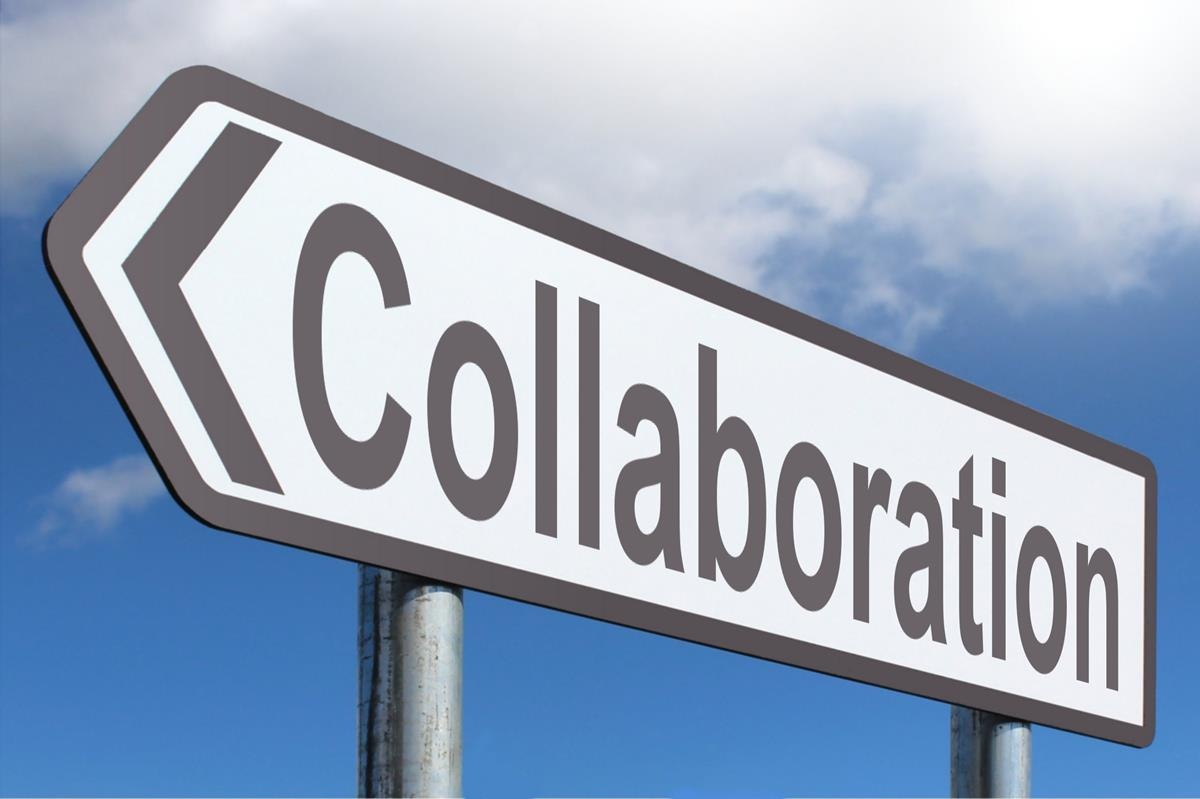John Dillard, Backwoods Man. 1993 as revised. John M. Dillard.
It was Sunday, June 29, 1941 on the grounds of the Head of the Tennessee Baptist Church at Dillard, Georgia. The writer was then nine years of age. White haired Dr. Andrew J. Ritchie intoned the history of Lt. John Dillard, a Revolutionary soldier and first settler of the town, while Beavert R. Dillard, his great-grandson, strained to hear and nodded his ruddy face in agreement. This was an “all day and county-wide devotional and patriotic gathering” to unveil a marker furnished for the grave of John Dillard. The printed page publicizing the event, directed by Ritchie, described the day as “devoted to the principles of religion and to a revival of Americanism as exemplified in the life and service of our forefathers”. Speakers included Judge T.S. Candler of the Superior Court and Dr. F.C. McConnell, Pastor of the First Baptist Church of Anderson, South Carolina.
Both the Baptist and the Methodist Churches let out regular services and combined with the reunion in the Baptist church for an 11:30 A.M. service of preaching and singing. Church services were also held again in the afternoon. Patriotic, familiar hymns were sung including “Faith of Our Fathers” and “The Battle Hymn of the Republic”. Approximately 200 or more descendants of John Dillard were in attendance. Out of this world good food in large quantities was prepared as a labor of love by the women of the Valley area of the county. Those present were not only Dillards, but members of practically every major family in the Valley area of Rabun County including the Gibsons, Nevilles, Dickersons, Ritchies, Martins and Grists who were related by blood or marriage to the Dillard family.
Fellowship, fun, and food was enjoyed by all. No one appeared to be burdened with knowing too many facts about John Dillard, the Revolutionary soldier, who was the center of the occasion. Ritchie, after hurried and brief writing to the then War Department and National Archives, concluded that this John Dillard was born in Culpepper County, Virginia in 1760, served in the American Revolution with Captain James Dillard, of Laurens County, South Carolina, while residing in Pittsylvania County, Virginia, and entered Rabun County when it was created about 1819 accompanied by his wife Ruth Terry Dillard and his three children, James Dillard, Mary Rebecca Dillard Dickerson and Elizabeth Dillard Dryman. All of that was later recorded by Ritchie in the now classic, Sketches of Rabun County History. It was considered the cast-in-stone family history of the Dillards from Rabun County, and is still the authoritative source of Rabun County history and genealogy.
Fifty years passed and no family reunion of this same group of Dillards took place. The idea of having a fiftieth anniversary of the 1941 reunion was conceived of by Louise Dillard Coldren, a descendant of John Dillard, in 1991 while helping this writer track down some sources of family history in Rabun County. Plans were made. That day was again commemorated on Sunday, June 9, 1991 at Dillard City Hall next door to the Dillard House in Dillard, Georgia, a few hundred yards from the grave of the Revolutionary soldier. Even though John Dillard was born and raised an Anglican, the Baptist pastor at Dillard, Georgia led the opening services with a religious and patriotic theme following the pattern of the 1941 reunion.
Several Dillard family researchers over the past fifty years have discovered facts which undermine some of the conclusions about John Dillard once held by the Rabun County family traditionalists.
The date of birth on John Dillard’s tombstone erected by the government which shows 1760 may be wrong. It should have read 1755. John’s Revolutionary pension application filed with the Federal Government when he was a 79 year old resident of Rabun County interlineated over 1755 making it uncertain as to whether 1755 or 1760 was correct. John Dillard could have been uncertain himself. He deposed to the Rabun County Inferior Court that he once had the date of his birth in a Bible, but it was “worn out” and illegible. Other facts make the date 1755 more probable.
John Dillard was about 68 years of age when he came into Rabun County before 1823, some three or four years after the county was created in 1819. His son, James, took title in his name alone to four lots of land totaling 1,000 acres in the present Town of Dillard through purchase from third party state land lottery holders. James was then in his thirties, had married Sally Barnard and had given birth to some of his children in Buncombe County, North Carolina from which both James and John came.
What many of Dillard traditionalists did not know in 1941 is that John Dillard in order to pioneer the opening of Rabun County had to give up his rural home of 34 years in the Flat Creek section of Buncombe County, which is located some ten miles north of the present Asheville, North Carolina. His home consisted of some 460 acres of farm land at Flat Creek west of the present town of Barnardsville. John had obtained a state land grant to his first property in Buncombe County in 1789 when it was then a part of Burke County, was Buncombe County ranger and was present on the first day of court at the organization of that county in 1791. He was a commissioner appointed by the North Carolina General Assembly for the laying out of Asheville as the county seat of Buncombe County in 1792 in a dispute which arose between two factions each of which wanted the county seat located on opposite sides of the Swannanoa River. Starting up a new county was not a new experience for John Dillard.
His wife, Ruth, may not have been a Terry, but possibly a daughter of Thomas Vaughn of Pittsylvania County, Virginia, who along with a John and his possible mother, Elizabeth, witnessed the Will of John’s uncle, Colonel Thomas Dillard, Sr. in that county about 1774. Terry was a name which crept into the family history through Obediah Terry Dickerson, a son-in-law who married Mary Dillard, and whose mother (but not Mary’s mother), was in fact a Terry.
The most shocking repudiation of the Rabun County Dillard tradition about John Dillard is that there were several children other than James, Mary and Elizabeth. These were not only not heard of until recent years, but positively denied as kinfolk by some of the Rabun County traditionalists who always insisted there were only three children. In addition to James, there were older sons Thomas Dillard, born in 1776, John Dillard, Jr., born in 1780, and William Dillard, born in 1782, all of whom unquestionably owned land adjoining their father’s home place at Flat Creek in Buncombe County, North Carolina in the early 1800’s, and took off to other parts of the country. An older daughter, Sarah Dillard, born in 1778 who married Baxter Davis, Jr., migrated from Buncombe County and died in Kentucky. Another daughter, Sophia Dillard, born about 1794, became the second wife of Gabriel Elkins while a resident of Buncombe County and ended up in Texas. That left the younger children, James, born in 1792 who married Sarah Barnard, Mary Rebecca, born in 1790 who married Obediah Terry Dickerson, and Elizabeth, born in 1784 who married Henry Dryman, Jr., all of whom came into Rabun County before 1823. There are possibilities of other daughters whose names are not known. Census records show a real crowd of people, whoever they were, in John’s household over a decade.
Some speculate there was another wife who died prior to John’s marriage to Ruth. Others speculate that there was a big family feud. Still others say it was just bad communications. Whatever the explanation may be, John Dillard, Jr. with his young family sold out in Buncombe County in 1812, left his father, and went to Knox County, Kentucky. John, Jr. later migrated back to Monroe County, Tennessee and finally settled near present Calhoun, Georgia where he died prior to 1847 and where there now reside a large number of his descendants. They, like other Dillard branches, are now spread over the entire United States.
William Dillard with his family (including his wife, a daughter of William Gregory, a friend almost like family going back with John Dillard into Pittsylvania County, Virginia) left Buncombe County in the same year to later become a resident of Greene County, Missouri where after the Civil War he cast his influence on the side of the Republican Party and died in 1877 at 95 years of age. Some of his sons were Presbyterian ministers. His descendants later scattered across the entire West and were the settlers of the Town of Dillard, Oregon.
The oldest son, Thomas Dillard, was the first to leave and went to northeastern Arkansas near Independence sometime around 1810 where his descendants to this day reside and did not until recent years discover their Buncombe County origins.
Some of the descendants of Thomas Dillard, John Dillard, Jr. and William Dillard attended the 1991 and 1992 reunions and were welcomed by their Rabun County cousins, all of whom enjoyed the fellowship and family spirit present on those occasions.
John Dillard represented in his Revolutionary Pension application that he was born in Culpeper County, Virginia. Just who were his parents and other ancestors were largely unknown by his Rabun County descendants of the past fifty years. Meanwhile, several able Dillard researchers spread across the country were at work over many of those years trying to piece together fragments of Dillard family history. These included Dorothy Dillard Hughes, Howard V. Jones, Lucile Robinson Johnson, Miriam Dillard Klar and others. This unreferenced overview is for the greatest part based upon the work product of these Dillard researchers to whom the Dillard family is indebted.
Deed records exist that Edward, Thomas, Sr. and George Dillard owned contiguous properties on Gourdvine Creek in Orange and its progeny county, Culpeper County, Virginia between 1737 and 1758. Another probable brother in the area was John Dillard. This was in northeastern Virginia not very far from Washington, D. C. Some of them also appeared in court records and in records of the Anglican Church (Church of England) in which they were active. The deduction has been made based upon circumstantial evidence these four Dillards were probably brothers. A further deduction has been made based upon the same type of proof that the probable parents of John Dillard of Rabun County were this same Edward Dillard and his documented wife, Elizabeth Dillard, later one of the witnesses to the will of Thomas Dillard, Sr. in Pittsylvania County, Virginia.
Two of these brothers, Edward Dillard, the believed father of John Dillard of Rabun County, and the prominent Thomas Dillard, Sr., after 1758 moved south into Halifax County and its progeny county, Pittsylvania County, Virginia where they are recorded in public and church records, including land records. This is an area northwest of present Danville in the midlands of southeastern Virginia. Very little is known of Edward Dillard. Information about his probable brother Thomas Dillard, Sr., is abundant. The properties of Edward and Thomas, Sr. in Halifax and Pittsylvania Counties adjoined each other. John of Rabun County took over his father’s land which had been acquired under a Virginia land patent. George Dillard and John Dillard, probable brothers, remained in Culpeper County in northeastern Virginia where lived for the rest of their lives.
This brings up the question of from where did George, Edward, John and Thomas, Sr. come upon their arrival in Orange, later Culpeper County. This is where the road is rough for the Dillard researcher. There is no answer to date but King and Queen County, Virginia is the most plausible theory. One or more of them are detected for a brief period of time in Essex County connected with the family of the wife of Thomas Dillard, Sr.
George Dillard, generally regarded as the first Dillard in this country, it is known was transported from England to coastal New Kent County, Virginia on May 22, 1650 where land records indicate he later owned property on the York River peninsular not far from present Williamsburg, Virginia. That area later became a part of King and Queen County, Virginia. English property tax records, known as the “quit rent rolls”, in 1704 show ownership of property in King and Queen County by Nicholas, Edward, George and Thomas Dillard.
It can surmise that the Edward, George and Thomas Dillard in the 1704 quit rent rolls are the same Edward, George and Thomas who later appeared in Orange, Culpeper, Halifax and Pittsylvania counties. However, their probable ages do not make this a reasonable conclusion. If not, it can be more reasonably speculated that they were the grandsons of George Dillard, the Pioneer. That raises another question of who was their father. Some have suggested that records indicate this father was another Edward. This is the subject matter of much uncertainty. No one knows the answer. No known records which have not already been thorough scrutinized seem to exist to search for additional facts.
The reason for this unhappy state of Dillard history is the destruction of the courthouse records by fire in both New Kent and King and Queen counties covering a century of time. This left a dark hole with no light in piecing together the Dillard family tree between two ends, one end being the entry of George Dillard, the Pioneer, and the other end the succeeding generations of Dillards who had migrated at a much later time into northeastern Virginia from their original coastal homes.
The typical Virginia migration pattern of early Virginia settlers and their descendants was to leave the coastal counties, migrate northeast and then south. George, Edward, John and Thomas Dillard, or their father, whoever he may have been, probably followed this pattern. Reasonable proof of family connections exist only after Dillards migrated from coastal Virginia areas inland as pointed out by William G. Hammell in his publication on the family history of a branch of Dillards who remained in the King and Queen County area.
A story linking many Dillards, including John Dillard of Rabun County, to wealthy planter James Stephen Dillard of King of Queen County which first appeared in a Montgomery, Alabama newspaper article at the turn of the century, repeated and handed down for many decades, seems mostly fictional. Historians at Colonial Williamsburg know nothing of his existence. Other than being an entertaining, grand story and an easy answer to who one’s ancestors are, it proves only the old saying quoted by a Dillard researcher “crooked as a geneologist“. There was a James but probably never a James Stephen Dillard. For the most part most Dillard ancestors, just like most Dillards of today, were just plain people.
From where did George, the pioneer, originate? England we know. However, that is about it. The records behind George’s arrival are even more murky and scant. Wilshire County, England appears most frequently in many tales passed on with no verification. These include that the Dillard family was originally French and came to England as Protestant refugees. Recent research by Miriam Dillard Klar indicates that few Dillards resided in England, but that many more Dillards reside in France. The Dillard story is not all tied together neat and tidy.
With better public records at a later time in an inland area, we know that it was while he was a resident of Pittsylvania County that John Dillard of Rabun County was sworn into the Virginia Militia in 1776 and served in the Revolutionary War. Most of his military service was under Thomas Dillard, Jr., his believed first cousin, who was captain over the county militia, to whom he had been “bound out” as an orphan following what is believed to have been the probable death of his father, Edward, who had earlier been excused from payment of quit rents by the vestry of Antrium Parish Church.
Ritchie’s conclusion that John Dillard served under Captain James Dillard, husband of Revolutionary heroine Mary Ramage Dillard, was in error. James had before this time migrated to Laurens District, South Carolina and participated in separate military events, including the Battles of Kings Mountain and Cowpens. Ritchie picked the wrong name because the given name of “Captain Dillard” in John’s Revolutionary pension application was not specified. Research was more difficult when Dr. Ritchie wrote his book than now.
John Dillard was in the Battle of Gwinn’s Island in 1776 on the Chesapeake Bay where a bombardment from the British Fleet took place. John with many other “backwoods men” (as described in the affidavit before the Rabun County Inferior Court on his pension application) became sick and were taken back home to Pittsylvania County in baggage wagons. In 1778, he again served under Captain Thomas Dillard, Jr. and marched to Boone’s Fort on the Kentucky River and later to the Ohio River where he built a stockade and two log cabins on an island in the river and where he was again sent back home with a group of sick men, including his captain, Thomas Dillard, Jr.
In 1780, John Dillard was a part of the Pittsylvania County Militia which joined General Greene on the Dan River in Halifax County against British Lord Cornwallis where he served as a Lieutenant under Colonel Issac Clemmons and Colonel Perkins and where he was dismissed without a written discharge in 1780. This was the Battle of Guilford Courthouse.
Following the close of the Revolutionary War in 1782, John Dillard along with his one-time guardian, Thomas Dillard, Jr. and William Gregory, (later alleged to be a Methodist minister who had also been “bound out” to Thomas Dillard, Jr.) left Pittsylvania, Virginia and migrated to Greasy Cove in Washington County, North Carolina, near what is now Erwin, Tennessee. Some of the family of the wife of Thomas Dillard, Jr. were already there. This territory was at that time the “wild west” frontier of the southeastern American colonies. In 1787, John Dillard was sworn in as an Ensign in the County Militia of Washington County, North Carolina during the internal political upheaval and Indian fighting in which that county was a part of the State of Franklin which had seceded from the State of North Carolina under its Governor, John Sevier. That territory is now part of the state of Tennessee just across the line from a then much larger Burke County, now Buncombe County, North Carolina.
Both John and James Dillard were already hardy “backwoods” pioneers who had done extensive moving in unchartered lands in new counties before they ever reached Rabun County. Once they bought out the lottery holders of the 1,000 acres of land in Rabun County, there is a family story that they had to buy it again from the Cherokee Indians who gave up the land on a trade for a muzzle loadinrifle, a jug of apple brandy, a coon skinned cap and three dollars. James Dillard was later a Justice of the Peace and State Legislator from Rabun County in which he died in 1861.
James Dillard’s three sons, John Barnett Dillard, William F. Dillard, (who was killed at Petersburg in the Civil War) and Albert G. Dillard along with his daughter, Mary Rebecca Dillard Dickerson, raised succeeding generations in Rabun County, Georgia. His daughter, Elizabeth Dillard Dryman, raised a large family in adjoining Macon County, North Carolina. A large number of their descendants are still there and nearby.
A successful 1992 Dillard Reunion was held at Dillard, Georgia, with well over 100 persons at the dinner meeting. Dillard history sessions have been held each year for three years. Many Dillards from lines outside the Rabun County Dillard line attended. Interest was expressed in learning about Dillards all over the United States.
Many things have changed in the intervening years from the June 29, 1941 Dillard Family Reunion. The pioneering spirit of a 68 year old man and his son who were willing to give up their established home of many years in Buncombe County to start a new life in unchartered land in new Rabun County, then recently ceded by the Cherokee Nation, and the same spirit of their ancestors in this country back to 1650, is the tradition which belongs to the Dillard family which will never change. It is worth documenting and preserving for future generations.
This post contains information which has been compiled from many sources. Some of the information may have been contributed by other researchers. Information within this site is contextually posted – if you copy this information please verify the context, source, and permissions prior to republishing at any location.
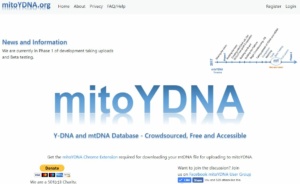
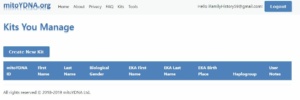 When you create a kit, you will download your results in a CSV file for YDNA, from your testing company to your computer then upload it to mitoYDNA. For mtDNA you will download a chrome extension (for Google Chrome) which will download your mtDNA results from your testing company to your computer then you can upload it to mitoYDNA. For more on how to download your Y-DNA and mtDNA and upload to mitoYDNA please visit our FAQ/Help page.
When you create a kit, you will download your results in a CSV file for YDNA, from your testing company to your computer then upload it to mitoYDNA. For mtDNA you will download a chrome extension (for Google Chrome) which will download your mtDNA results from your testing company to your computer then you can upload it to mitoYDNA. For more on how to download your Y-DNA and mtDNA and upload to mitoYDNA please visit our FAQ/Help page.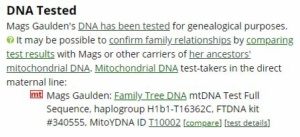

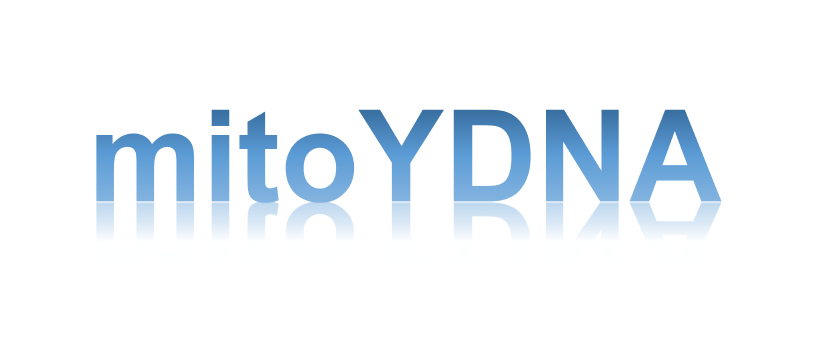
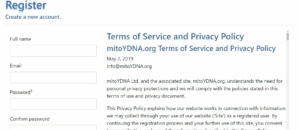




 Just…Amazing!
Just…Amazing!






